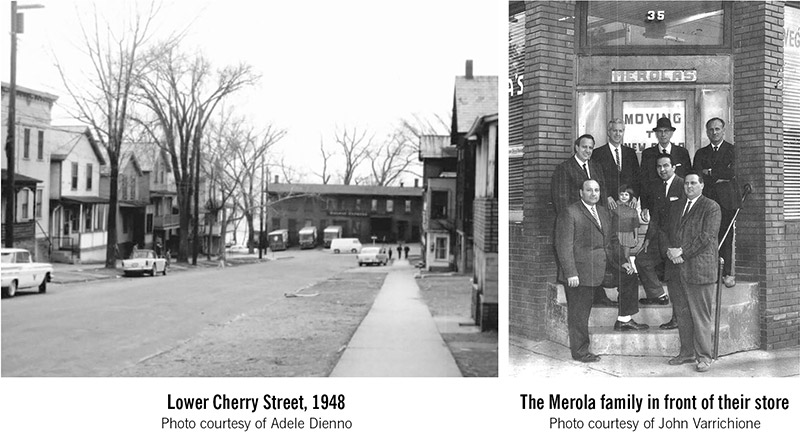CityPlace Burlington: Looking Back, Looking Forward

Wednesday, May 17, marked an anniversary that some older Burlington residents will never forget. It was on this day, decades ago, that brought the beginning of Urban Renewal. It was a time when many of our older homes and businesses were knocked down to make way for new development. By June 1968, the neighborhood had been leveled, and the demolition was complete.
Burlington voters approved this plan in part to stop what some considered the blighted decay of run-down buildings. But the decision to level a 27-acre portion of downtown meant the end of a long-time working-class neighborhood known as “Little Italy” that had occupied the area between Battery and South Champlain streets. This is where the Hilton, St. Paul’s Cathedral, the Costello Courthouse and Cathedral Square now stand.
During the 1960s and 1970s, the urban renewal zone was filled project by project, as some initiatives moved forward and others were proposed but never constructed. One of the projects that succeeded was the Burlington Town Center mall, conceived to bring suburban indoor shopping to the middle of downtown Burlington. The mall was built on the three blocks west from Church Street, cutting off north-south travel on Pine and St. Paul streets.
This urban-renewal ethos, designed to ease travel from the suburbs and replace dense residential neighborhoods with suburban-style shopping and office buildings, was put into practice in cities around the country. It’s now widely regarded as antithetical to what makes urban life attractive and sustainable: walkable, colorful streets with a compact mixture of housing, workplaces, restaurants, shops and entertainment venues. PlanBTV, the city’s collaboratively-created municipal plan, recognized this and set forth a 21st Century vision for the old Urban Renewal area: reconnect the streets, bring back dense housing, and breathe life into the retail and services available in this key downtown area.
That is exactly what CityPlace Burlington, the redevelopment of the Burlington Town Center, seeks to accomplish. Up to 426 apartments—including as many as 84 that will be permanently enrolled in the city’s Inclusionary Zoning program to protect affordability—will bring far more residents downtown. Harkening back to the old grocers and hardware stores that served Little Italy, the newly restored Pine and St. Paul streets in the redevelopment will have new retail and services designed to serve this new neighborhood.
CityPlace Burlington will continue to have shopping too—in fact, the Church Street portion of the mall will remain open and will attract new tenants while the redevelopment occurs from St. Paul to Pine streets. But the shopping, other retail, and services will be designed to complement our iconic Church Street and buffer Burlington from the reality of internet shopping that has affected malls and other large retailers nationwide. The CityPlace Burlington Development Team is looking forward to building a new City Center where residents and visitors alike can walk, eat, play, shop, and enjoy all that our vibrant city has to offer.